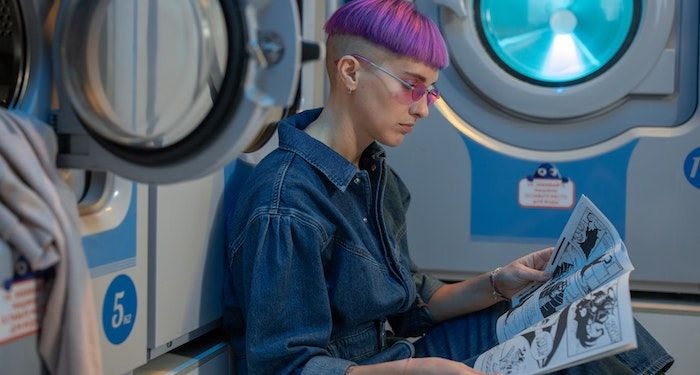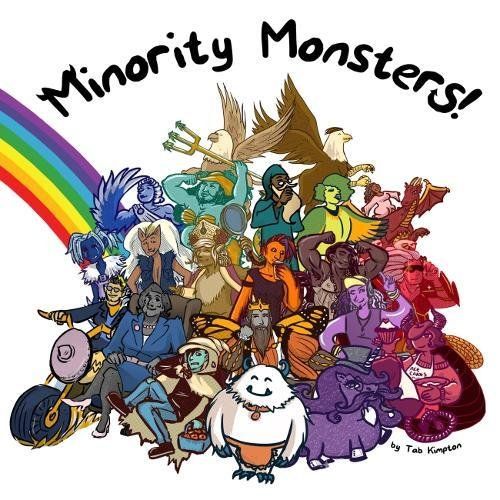
I’ll Do It Myself: The Impact of Crowdfunding on Indie Comics
The rise of crowdfunding platforms has opened up a world of opportunity to independent comics creators. Without the backing of a large traditional publisher like Marvel or DC, indie comics have to work on a tight budget, and funding large projects can be difficult for anyone without savings or alternative income streams. The majority of indie comics creators start selling by paying for a small run of print copies out of pocket, and it can take years for creators to build up a readership that makes this sustainable. While there are grants for comics creators, these are competitive, and applying can be a daunting process. There’s also the additional issue that anyone looking for a grant must apply to an organisational board, who are unlikely to have heard of them or their comic, rather than to an already established readership.
Crowdfunding platforms have allowed indie creators to change the way they fund larger projects; they can pitch directly to their readers, using the connections and platforms they have built up during their time as a creator, and directly monitor how their campaign is going. It’s no surprise that many comics creators have built crowdfunding into their business model. C. Spike Trotman, founder of Iron Circus Comics, has funded several successful projects through Kickstarter campaigns, raising a total of $1.25 million to date. Trotman has praised Kickstarter for “formalizing and making transparent what cartoonists had already been doing for years”, while Steve Tanner of Time Bomb Comics notes that “Kickstarter has the direct link to the people buying your books – that direct interaction is golden”.
The embracing of crowdfunding platforms by comics creators has had a huge impact on the world of indie comics. As an avid comics reader, I’ve contributed to several comics crowdfunders, such as the funder for Tab Kimpton’s Minority Monsters book. From my reader perspective, crowdfunding campaigns are an exciting way to engage with my favourite stories; I can feel like I’ve made a real contribution to a creator’s project, and getting an early copy of a release (along with other rewards like T-shirts or art cards) feels like comics Christmas. But how do creators themselves feel about crowdfunding? I spoke to some comics artists and writers who’ve run campaigns to get their take on this funding process.
Gustaffo Vargas, creator of sci-fi and cyberpunk comics, discussed his experiences of running and contributing to Kickstarter campaigns: “In 2020 I was involved in one Kickstarter campaign for SKRAWL magazine, and a little after that I launched my own Kickstarter campaign, PUNO”. It was very successful, better than any of my expectations. Kickstarter got my project to a lot of new people, and made a lot of noise. I was able to make some connections and show my work to other professionals that otherwise wouldn’t know my work.”
Steve Tanner got into crowdfunding campaigns through a route not directly connected to comics: “It wasn’t a comic campaign that opened my eyes to how Kickstarter could be used but one for a tabletop game. I saw how the campaign was being used to reward the backers for pre-ordering the game, and decided to adopt that approach.” Like Vargas, Tanner likes crowdfunding platforms because of the potential to connect with with new people, and to directly reward backers: “any books pre-ordered through my campaign will be cheaper than they would be on general release, postage is free for UK backers, and every backer will receive at least one extra item on top of their base pledge, with some backers receiving considerably more. So far I’ve run sixteen campaigns using that model, and they’ve all successfully funded.”
Of course, there are also dark sides to crowdfunding platforms. Tanner notes “I avoid IndieGoGo as a creator and consumer due to that platform’s affiliation with Comicsgate”; this reason is also why I have focused on Kickstarter primarily in this article.
There are also non-problematic but potentially off-putting parts of the crowdfunding process itself, particularly the necessity of promoting projects, something that may be daunting to artists and writers who have little advertising and promotional experience. As Tanner says, “The one thing I always share with creators thinking of crowdfunding themselves is that you can’t be shy about promoting your campaign before it launches and when it’s running. It’s all about the promo, and I think that the amount you have to do catches some people out.”
Vargas agrees, noting “The hardest part is the obvious: you’re not a creator anymore, but an editor/publisher, and it’s a very different creature. Understanding all these new different channels and being able to respond and communicate with all of them while working on your comic and keeping up with social media was very intense, exciting but also draining, and with some amount of anxiety as to what would happen the next day.” He also points out the potential difficulties caused by the rise of crowdfunding, and by world events: “I feel that we might be feeling a bit of saturation in the market. Also, Brexit regulations and taxes are making things a lot more difficult and expensive. Shipping is a big issue and I think it’s already negatively affecting campaigns.”
While crowdfunding campaigns can be exhausting to run, and success isn’t guaranteed even with hard work, there’s no doubt that being able to fund comics projects by direct collaboration with readers has changed the landscape of indie comics. With comic conventions opening up again after the lull caused by the pandemic, it’s likely that many more creators will be turning to crowdfunding to relaunch or revitalise their comics projects. I can’t wait to see what the future holds for indie comics crowdfunders.
If you’re interested in the history of traditionally published comics in the U.S., check out 10 Things You Might Not Know About the Comics Code Authority. For more on marginalisation within the world of comics, read We Want More Indigenous Superheroes!















